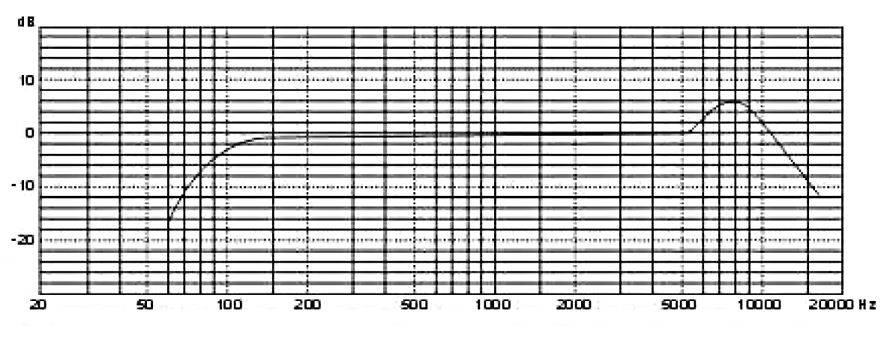Long the role of the professional sound engineer, choosing the appropriate microphone has now become, with the proliferation of the home studio, the task of the amateur and even the beginner. This choice should depend upon what you’re going to be using the mic for, but also on personal preferences. In this article we’ll be dealing with the two main categories of microphones: dynamic microphones and condenser microphones. .
|
|
Long the role of the professional sound engineer, choosing the appropriate microphone has now become, with the proliferation of the home studio, the task of the amateur and even the beginner. This choice should depend upon what you’re going to be using the mic for, but also on personal preferences. In this article we’ll be dealing with the two main categories of microphones: dynamic microphones and condenser microphones.
.
|
|
Dynamic Microphones
These mics generally have a more robust design due to the fact that they are more often used in live settings. They are also usually less expensive and resistant to moisture.
Dynamic microphones use a diaphragm which is attached to a coil of wire placed within the magnetic field of a permanent magnet. When there’s a variation in pressure on the diaphragm it will cause the coil to generate a varying electric current which then needs amplification. Because it’s necessary to attach the coil directly to the diaphragm, dynamic mics tend to have thicker diaphragms than condenser mics. Because of this, recordings are less precise as they’re less sensitive to high frequencies than condenser mics. Popular models include Shure SM57 and SM58.
Dynamic mics generally don’t need any electrical power to operate (as opposed to condenser mics). They are ideal for all-round high sound pressure levels (SPL).
|
1.Sound Waves, 2.Diaphragm, 3.Metal Plate, 4.Battery, 5.Audio Signal |
Condenser or Capacitor Microphones
Also known as capacitor or electrostatic microphones, this type of mic picks up sound through a thin, flexible diaphragm that’s placed next to a metal plate ( as opposed to the rigid diaphragm/coil system used by dynamic mics).
Condenser mics can range from inexpensive Karaoke mics to ultra high level recording mics. Generally, they produce high-quality audio signals and are sensitive to distant sounds and high frequencies. Because of these reasons they are often used in studio recording situations.
Because condenser mics are more sophisticated and are more difficult to manufacture, high quality condenser mics are rather expensive. Condenser mics are ideal for recording voice, acoustic guitars, pianos, orchestral instruments, percussion, and sound effects. Some of the most famous models are the Neumann U47 or the AKG 414.
Phantom Power
Condenser mics require a power source, provided either from microphone inputs as phantom power or from a small battery. The most common type of phantom power is +48v DC. This phantom power is used to charge the diaphragm and plate. It also supplies a small amplifier which boosts the small current* generated by diaphram movements. Phantom power supplies are often built into mixing desks, microphone preamplifiers and similar equipment.
Ribbon Microphones
Ribbon mics are a type of dynamic microphone. They use a very thin metal ribbon that’s suspended between the poles of a powerful magnet. Sound waves cause this ribbon to move and create an induced current. Voltage output of older ribbon mics is much lower than dynamic mics so a transformer is used to increase voltage output and to increase output impedance. Modern ribbon mics avoid this problem by using improved magnets and more efficient transformers. Ribbon mics are usually bi-directional (see next page on pick-up patterns). Classic models include the RCA 44 and 77 as well as Royer mics.
Pick-up/Polar Patterns
A pick-up (or Polar) pattern, also referred to as the mic’s directionality, indicates to the area(s) from which a mic picks up sound. It shows how sensitive it is to sounds coming in from different angles about its central axis. It’s important that you choose the right pattern for what you’ll be using the mic for, or you might capture sounds from areas you don’t want or lose sound information you need.
|
Omni Pattern |
Omni Pattern
This is the most basic type of mic pattern. It has a theoretical 360° pick up response, which means that it responds equally to sounds coming from all directions. Ideal for group vocals, sound effects, and room ambiances. Omni patterns are pressure sensitive and therefore less sensitive to wind noise than directional (velocity sensitive) mics. They also give less of an impression of proximity than directional mics so they’re also less sensitive to the movements of singers.
|
Cardioid Pattern |
Cardioid Pattern
This heart-shaped pattern is the most common for unidirectional microphones. The name cardioid come from Greek for heart-shape. This cardioid shape means that its unidirectional and that most of the sound is picked up from the front. This pattern is used for most basic recording situations or whenever a sound has to be picked up from mainly one direction. Because the back of the element rejects sounds it receives, dynamic cardioid mics are often used for live situations. This property helps reduce unwanted spill from other instruments, and therefore reduces the risk of feedback.
|
Hyper-Cardioid Pattern |
Hyper-cardioid
This pattern is similar to cardioid but with greater directionality.It has a tighter area of front sensitivity and a tiny lobe of rear sensitivity.
|
Figure 8 Pattern |
Figure 8
These mics (also called bi-directional) receive sound from both front and back but not from the sides. These mics are ideal for recording two harmony vocalists, duos, or face to face interviews with only one mic.
Other Considerations
|
Fig.1: A Typical Frequency Response Chart |
Frequency response
This is a measure of the microphone’s sensitivity to different frequencies. It’s a characteristic of all mics that some frequencies are exaggerated and others attenuated. So the frequency response shows how a particular mic responds to particular frequencies.
A chart usually shows a mics’s frequency response. The x axis shows frequency in Hertz, the y axis shows response in decibels. A higher value means exaggeration and a lower value means attenuation. A completely flat chart (frequency response) would show that the mic is equally sensitive to all frequencies. But in reality a totally flat response is impossible and even the best mics have some degree of deviation. Also it should be noted that sometimes a mic is especially chosen for the specific frequency response that it has. For example, a mic with a frequency response adapted to the human voice would be a good choice for recording in an environment with low frequency background noise.
Self Noise
This measurement represents the lowest point of a mic’s dynamic range. This is important if you want to record very soft sounds. Basically, the lower the number is, the better.
Maximum SPL (Sound Pressure Level)
This is the maximum level a mic can accept. Here, the higher the number, the better. But one should note that mics with very high SPLs have higher self noise.
Sensitivity
Indicates how well the mic converts sound pressure into output voltage. The higher the number, the higher the sensitivity. A highly sensitive mics produces more output and will therefore need less amplification after. It should be noted, however, that a higher sensitivity rating does not necessarily make one mic better than another.






 l
l